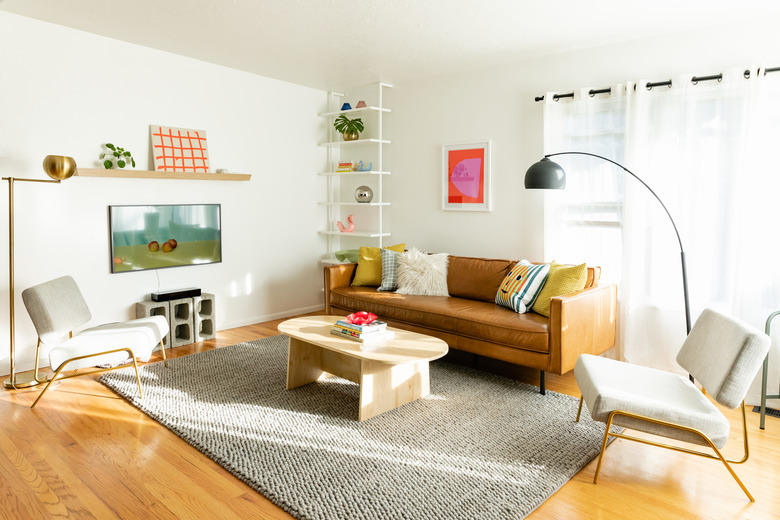Types Of Underlayment: A Homeowner's Guide
Beautifully laid floors don't happen by accident. They require proper planning, a strong subfloor and the right underlayment. Without these things to support them, even the most stunning of floors can look absolutely awful.
Usually made of plywood, subfloors need only be level and strong enough to support the weight of the floor. There are several different types of underlayment, however, and it's important to choose the right one.
Underlayment can provide a variety of benefits depending on the type and application. Some are intended to smooth an imperfect subfloor, and some can provide sound reduction or moisture protection. Soft underlayments can also offer some cushioning, while more solid underlayments can provide additional stiffness for rigid flooring materials like tile.
Tile Flooring Underlayment
Tile Flooring Underlayment
The type of underlayment you choose will depend largely on the type of flooring you want. When laying a tile floor, you have two underlayment options, one of which is cement board. Made primarily from cement, sand and wood pulp or synthetic fibers, cement board provides a stiff, flat layer that is essentially impervious to water damage. It also resists movement in the subfloor to help prevent cracking in the tile installation. Cement board is just flexible enough, however, to allow for a little bit of expansion and contraction as the humidity level in your home changes.
Costing an average of 75 cents to $1.10 per square foot, according to the Home Flooring Pros, cement board is an excellent option. It's not the only one, however. You can also opt for a flexible plastic membrane. Referred to as uncoupling membrane, this plastic underlayment sheet material contains a grid of small squares or a netting that the mortar fills, helping to hold the tiles firmly in place after the floor sets.
Although most underlayments simply float on the subfloor, cement board is typically adhered to wood subflooring with thinset tile adhesive before being screwed to the subfloor. Uncoupling membranes are adhered to either wood or concrete subflooring with thinset. Uncoupling membrane is a bit more expensive than cement board at $1.55 to $1.90 per square foot.
Laminate Flooring Underlayment
Laminate Flooring Underlayment
Because laminate floors float rather than being glued to the subfloor, putting underlayment beneath them is an absolute must. Underlayment is so crucial to laminate floors that some laminate manufacturers build an underlayment layer into their products. Laminate floor underlayment helps the floor planks to stay locked together, lends stability to the flooring and helps reduce noise.
Costing about 30 cents to 45 cents per square foot, foam underlayment is inexpensive and is easy with which to work, especially for those who are new to DIY flooring projects. Foam also provides some cushioning and insulation for added warmth. Some foam underlayments include a built-in moisture barrier, which you'll need if you're installing your laminate over a cement subfloor or anywhere moisture could be a problem.
A foam underlayment also provides some sound absorption, but it may not be enough. If you're concerned about traveling footsteps and noises, look for an acoustic laminate underlayment. Typically made from felt or cork, acoustic underlayments are designed to absorb sound so it doesn't migrate to nearby rooms. Acoustic dampening can cost up to $1.25 per square foot, but it's sometimes well worth the peace and quiet it provides.
Floating Hardwood Flooring Underlayment
Floating Hardwood Flooring Underlayment
When installing an engineered hardwood floor, you have the option of using a floating installation method that requires no glue or nails to hold the floor in place. You can use one of several types of underlayment with a floating hardwood floor, all of which work under laminate flooring as well. At 75 cents to $1.25 per square foot, felt is the least-expensive option. Felt generally doesn't require a moisture or vapor barrier, but it doesn't do well in humid areas.
Cork underlayment is another good choice. Quality cork runs $1.15 to $1.50 per square foot but provides more cushioning and sound dampening than felt. It also provides extra warmth and holds heat quite well when paired with radiant in-floor heating systems.
Like cork and felt, rubber underlayment floats on the floor, so it's easy to remove later without damaging your subfloor. Rubber offers more insulation, sound absorption and cushioning than felt or cork. It's also easy to work with and costs around the same price as cork underlayment. Rubber works well, but you may have to live with a new rubber smell for a short time after installing your floor.
Fastened Hardwood Underlayment
Fastened Hardwood Underlayment
Traditional hardwood floors are typically nailed or stapled to the subfloor beneath them. Engineered hardwoods can also be nailed or stapled into position. You may also choose to glue engineered hardwood in place.
If you elect to nail a wood floor in place, the only underlayment you'll need is a simple moisture barrier to protect the floor. You can use 15-pound roofers' felt or an asphalt paper, which can be had for 39 cents to 58 cents per square foot. Run the underlayment in the same direction as you will the planks of your flooring, cutting around door frames, vents and other obstacles as needed.
You can opt to glue engineered hardwoods in place rather than nailing or stapling them, in which case you won't need an underlayment. If you're gluing your engineered hardwood onto cement, choose an adhesive with a built-in vapor barrier. Otherwise, you can choose any adhesive specifically made for use with wood floors. Always make sure your adhesive is meant for use with wood, as other glues won't allow for the wood's natural expansion and contraction.
Vinyl Flooring Underlayment
Vinyl Flooring Underlayment
The recommended underlayment for most vinyl floors is plywood. When you look at your subfloor, it may appear that it is made from plywood, suggesting that you don't need an underlayment at all. This is incorrect, however — subfloors and underlayment are very different. Subfloors are typically made from oriented strand board (OSB) and other multilayered products built for strength and integrity. The subfloor is part of the structure of your home.
True plywood underlayment, on the other hand, creates a smooth, uniform surface on which to lay your flooring. If your subfloor is in poor condition, it's imperative that you repair it rather than counting on a plywood subfloor to provide the same amount of support and structural integrity.
For large rooms, you can use 4 x 8-foot plywood sheets for fast installation. In smaller rooms, however, it's easier to work with 4 x 4-foot sheets. Readily available, you can purchase plywood sheets at your local hardware store for 40 cents to $1 per square foot. The plywood is all you'll need. Since vinyl is considered waterproof, you won't need to install a moisture barrier along with your underlayment.
Carpet Flooring Underlayment
Carpet Flooring Underlayment
Technically, an underlayment is the layer of flooring installed directly underneath the finished floor surface. As such, carpet padding is a type of underlayment. It too offers many options from which to choose.
A basic textured rubber padding will prevent the carpet from slipping and will get the job done, but it doesn't offer much cushion and may flatten over time, especially in high-traffic areas. Standard foam underlayment is also available and offers more cushion than rubber padding. As a general rule, the quality and softness of foam carpet underlayments increase as the thickness and density of the pad increases. At the top of the quality scale is memory foam, which offers superior cushion and durability.
Carpet underlayment pads start at around 55 cents per square foot but can easily reach $1.10 per square foot as the material gets thicker. Carpet padding is easy to cut and shape as needed and often contains some type of moisture or stain resistance to protect against occasional spills.
Self-Leveling Underlayment Options
Self-Leveling Underlayment Options
When you're installing a new floor over a concrete subfloor, it's important that the floor is in good condition. Cracked, pitted or out-of-level concrete surfaces make for poor subfloors. Flaws in concrete often prove severe enough to negatively impact the look or longevity of the new floor placed above them. You can solve this problem with a self-leveling underlayment.
Cement-based underlayment, or compound, comes in a dry powder form and is mixed to a thin, runny consistency. It takes advantage of the fact that liquid always levels itself. As such, you can pour up to 1 inch of self-leveling underlayment onto your floor, spread it around a bit and then let it level itself before it sets. Similar materials are also used when installing radiant in-floor heating over a concrete slab.
It is of note that self-leveling underlayment compounds for concrete floors don't work on defects more than about 1-inch or 1 1/2-inches thick. If you have deeper gouges or cracks in your floor, you'll want to repair them before applying the leveling underlayment. A 50-pound bag of self-leveling underlayment costs about $30 and covers about 50 square feet depending on the application thickness.
Underlayment Installation Tips
Underlayment Installation Tips
If you hire professional installers for your flooring installation, they will take care of the underlayment. If you're doing the floor yourself, however, it's important to avoid some common rookie mistakes. One of the most common errors is failing to acclimate your flooring material to the room. Keep both your flooring itself and the underlayment in the room for at least 24 hours before laying them so that any expansion or contraction has already occurred.
When laying a plywood subfloor under vinyl, place the sheets perpendicular to the floor joists rather than parallel to them. It's also important to stagger your seams. Plywood has a front and a back, so make sure you install it with the front facing upward. The back of plywood is often stamped, and the ink can soak into your vinyl and cause a stain if the two surfaces meet.
As you install thick underlayments like rubber or carpet padding, you'll need to butt the seams up against each other, getting one piece of underlayment as close as possible to the next. When working with thinner materials like felt, some manufacturers suggest slightly overlapping your underlayment at the seams. Others tell you not to do so. You'll need to read the directions on your particular product to determine how you should handle seams.


